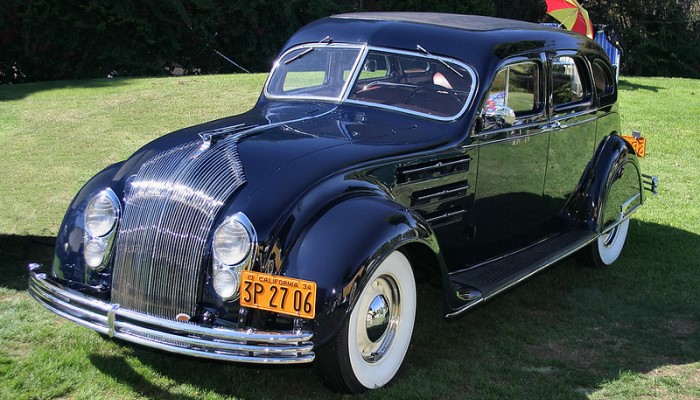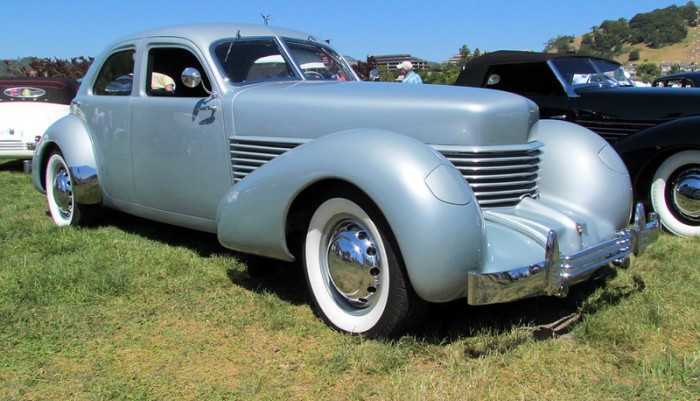1940 Lincoln Continental
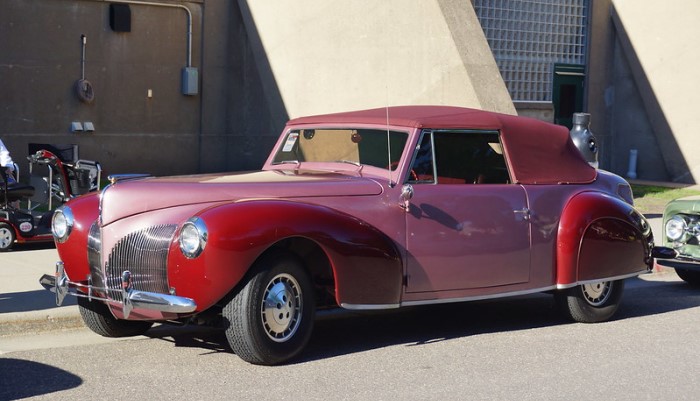
Photo: "1940 Lincoln Continental Cabriolet" by Crown Star Images
Long-Hood, Short Deck
The concept of the Lincoln Continental car was created by Edsel Ford, son of Henry Ford.
More than one book has been written about their often uneven relationship, but here we will only note that old Henry was a die-hard technocrat, and his son Edsel a rampant aesthete.
The very idea of such a car originated with Edsel is not known when, whether in the early 1910s, when he became interested in European automotive engineering as a teenager and got himself an album of favorite cars from the Old World.
Or in the twenties, when his father appointed him president of the newly acquired Lincoln company, providing him freedom of action and the punishment to build the best cars.
There is no doubt that the Lincoln Continental is descended from the Lincoln Zephyr, which was successful not only among aesthetes, but also on the market.
In late 1938, Edsel Ford returned from a vacation in Europe and, inspired by what he saw at European Motor Shows, ordered a car for his personal use from a body shop.
The car had to look fast, sporty, but at the same time not lose its nobility of shape.
By the end of February 1939, the car was ready and sent by ship to Florida, where Edsel was resting at that time. The very first trips caused genuine admiration of others.
Returning to Dearborn in April, Edsel finally decided that the car would go into series production under the name "Continental" along with the new Lincoln Zephyr series, representing the most expensive model in this series.
Its price of $2,840 was one of the highest in America at the time.
Production Continentals were built by hand, like the experimental model, but they went quite far from both the Lincoln Zephyr and Edsel's Florida car.
The car used components and assemblies identical to those installed on the Lincoln Zephyr: a 120 hp V-12 engine with a volume of 267 cu in (4,378 cc), a three-speed manual gearbox and a suspension with transverse springs.
The Lincoln Continental was produced in the amount of 403 copies (64 coupes and 339 convertibles) and was recognized as one of the most beautiful cars in America.
In 1951, three years after production ceased, the Lincoln Continental was placed in the Museum of Modern Art in New York.
Spare Tire - "Continental Standard"
Externally mounted, covered spare tire added an air of sophistication to an already stunning design.
The elongated body and smooth lines of this classic car were a sight to behold, but it was the spare tire that really caught people's attention.
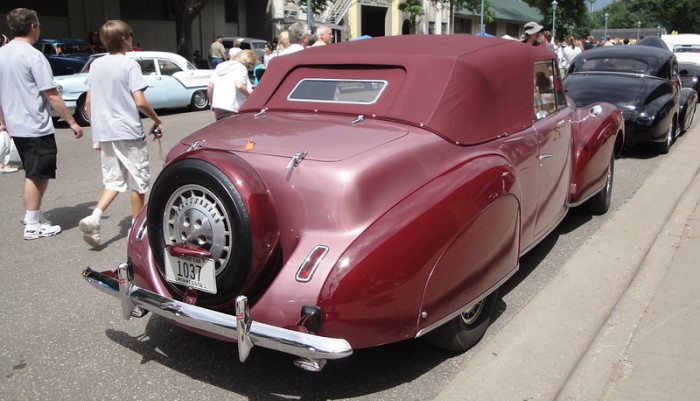
Photo: "1940 Lincoln Continental" by Crown Star Images
Sitting proudly on the back, sheltered by a sleek cover, it was both practical and elegant.
The 1940 Lincoln Continental was a true work of art, with the spare tire serving as the perfect exclamation point. It was a car that demanded attention, and it still turns heads today.
Interior
The interior of a 1940 Lincoln Continental exudes an aura of elegance and luxury. The plush leather seats are wide and comfortable, offering ample space to stretch out during long drives.
The dashboard, adorned with intricate detailing, is a true work of art. The speedometer and gauges are stylishly encased in chrome and sit prominently in place, allowing the driver to keep a close eye on the car's performance.
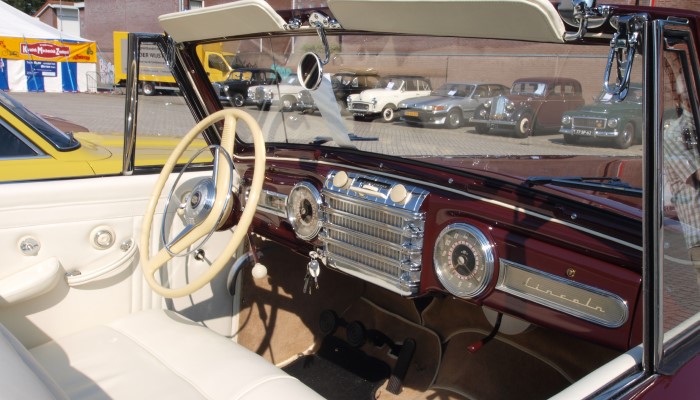
The steering wheel is massive, and made of a beautiful dark wood, which enhances the car's vintage charm. The doors are also wrapped in leather and adorned with fine wood trim, adding to the car's overall luxurious atmosphere.
The car's windows are wide and almost wrap-around, offering a panoramic view of the world outside. The natural light that pours in creates a sense of openness and freedom, and the scent of freshly-tanned leather adds a delightful aroma to the car's interior.
Everything inside the 1940 Lincoln Continental is designed with the discerning driver in mind. The car's interior is spacious, luxurious, and incredibly comfortable, making any journey an absolute pleasure.
Sony's Last Ride
This classic car has captivated audiences with its elegant presence and has become an integral part of many memorable film moments.
A movie that showcases the unmistakable beauty of the 1940 Lincoln Continental is "The Godfather" (1972), directed by Francis Ford Coppola. In this iconic gangster film, the car is driven by Sony Corleone, played by James Caan.
In fact, the most memorable scene was Sony's last ride in this vehicle, in which he was killed in classic mafia fashion—shot with a thousand bullets.
The black, shining exterior of the Lincoln Continental perfectly complements the dark and mysterious aura of the Corleone family.
Lincoln Continental Mk I in Today's Market
On average, a well-maintained Lincoln Continental Mk I can range anywhere from $20,000 to $50,000, with certain rare models or limited editions fetching even higher prices. Of course, this is just a general estimate, and prices can vary depending on a multitude of factors.
The most expensive pre-war Lincoln Continental sold was $148,500. The sale was made at the Mecum auction in Indianapolis in May 2019.
The car was in excellent condition, with a beautiful burgundy color and red leather interior. In one word, a fantastic specimen!
A Closing Word
Owning a 1940 Lincoln Continental is a dream come true for many classic car enthusiasts, and for good reason. This car is a true masterpiece, with its stunning looks, exceptional performance, and incredible pedigree.
If you're in the market for a classic car that represents the best of American design and engineering, the 1940 Lincoln Continental is an excellent choice.

Unique Car Zone Team
A group of several fans of everything that moves on four wheels, a few article creators, a couple of marketing strategists, designers, web developers, and lots of coffee.




